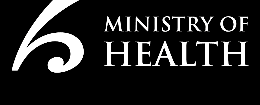
Document Four
Memorandum
Memo title
Date due to MO: 30 June 2020
Action required by:
N/A
Security level:
IN CONFIDENCE
Health Report number: 20201069
To:
Hon David Clark, Minister of Health
Copy to:
Contact for telephone discussion
Name
Position
Telephone
Keriana Brooking
Deputy Chief Executive, COVID-19 Health section 9(2)(a)
System Response
Kelvin Watson
Manager, COVID-19 Health Supply Chain section 9(2)(a)
under the Official Information Act
Action for Private Secretaries
N/A
Date dispatched to MO:
Released
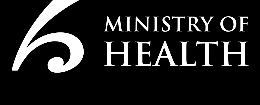
Document Four
Response to Auditor General’s report on
PPE
Purpose of report
1.
This report provides information on the Ministry of Health’s (the Ministry’s) response to
the report by the Auditor General titled
Ministry of Health: Management of personal
protective equipment in response to COVID-19.
Background
2.
The Office of the Auditor General (OAG) released their report titled
Ministry of Health:
Management of personal protective equipment in response to COVID-19 on 17 June
2020. The report found that while the Ministry and district health boards (DHBs) had
planned for a national health emergency, there were gaps in the planning about how
personal protective equipment (PPE) would be procured and distributed to mitigate the
risks of any shortages. In addition, reserve stock had not been well managed nor
maintained, and guidelines for the use of PPE evolved during the pandemic causing
some confusion among users.
3.
The report concludes that COVID-19 would have chal enged any public health and
disability system, and that the Ministry moved quickly to establish a new centralised
system for procuring, prioritising, and distributing stock.
4.
The Ministry largely agree with the conclusions of the report and has accepted all ten
recommendations. In some cases, work ahead of the release of the report has
addressed some recommendations. Overal however, the recommendations provide
useful guidance to the Ministry as we look to strengthen the systems and processes
that support the supply of PPE and improve our preparedness for any future events.
Response to the recommendations made in the report
5.
At the time the report was released, the Ministry had already initiated several pieces of
under the Official Information Act
work relating to the PPE supply system for the health and disability sector, with further
work planned. Some of the work underway spans multiple recommendations. Once
completed the work wil address the recommendations in the report in full.
National Health Emergency Management planning gaps
6.
The Ministry is currently completing an interim update to the National Reserve Supplies
Management and Usage Policy (3rd edition). This interim update will clarify roles and
Released
responsibilities for the national reserve supply, eligibility for accessing the national
reserve and prioritisation.
7.
The National Health Emergency Plan (NHEP) wil be reviewed in 2020/21, reflecting the
actions carried out in response to the recommendations from the OAG report and the
lessons learned from COVID-19 overal .
8.
section 9(2)(f)(iv)
Health Report: 20201069
2
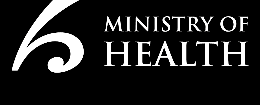
Document Four
section 9(2)(f)(iv)
9.
The Emergency Management sections of the Ministry's accountability documents will
be reviewed in 2020/21 to ensure alignment with national planning documents and
roles and responsibilities.
10.
A full review and update to the National Reserve Supplies and Management Usage
Policy will be completed fol owing the planned update to the national reserve supply
system.
11.
This activity wil address recommendation 2 in the report.
Monitoring and review of DHB plans
12.
DHBs have responsibilities under the Civil Defence Emergency Management Act (2002)
and the Ministry's accountability documents (Operational Policy Framework and Service
Schedule) to have health emergency plans in place. The Ministry wil engage with DHBs
to re-establish a national y consistent process to ensure that DHB health emergency
plans are current, meet the minimum planning requirements and align with national
plans and policies.
13.
This activity wil address recommendation 1 in the report.
Updating the national PPE procurement strategy and governance
14.
In response to the report, the Ministry is establishing a governance framework with
clear roles and responsibilities to determine and agree on the criteria for the
management and purchasing of critical medical supplies, including PPE.
15.
The roles and responsibilities wil include a national procurement coordination function
performed by NZ Health Partnerships Ltd, with oversight, strategic direction,
monitoring and funding continuing to be provided from the Ministry. The coordination
function wil be reviewed after four months to assess its effectiveness and to amend the
model as required.
16.
In addition, the Ministry is:
under the Official Information Act
a. working with regional DHB Chief Financial Officers, NZ Health Partnerships Ltd and
regional procurement leaders to strengthen the short-, medium- and long-term
procurement strategies and plan for the active and reactive management of critical
medical supplies (including PPE), which we anticipate wil be completed by the end
of July
b. working with DHBs and procurement category leads to implement a reporting
structure that wil provide clarity on inventory forecasting and support better
quality sourcing
Released
c. reviewing processes for sourcing and defining acceptance criteria of products
given the increasing global reports about non-compliant PPE.
17.
This activity addresses recommendations 4, 7 and 10 in the report.
Health Report: 20201069
3

Document Four
Updating the national reserve supply system
18.
The Ministry is reviewing the national reserve supply system, which spans policy and
scope of the national reserve supply, supply item requirements (types, specifications,
size and volume), procurement and management.
19.
The review wil reflect the lessons learned from the response to COVID-19 and include
consideration of:
a. the range of PPE items required be held in the national reserve
b. the types, specifications and sizing requirements for each identified item
c. the volume required to meet forecast requirements.
20.
National reserve system stock levels for each item need to reflect the known supply
chain risk and the anticipated demand during an emergency. National reserve system
levels will be reviewed on an ongoing basis to ensure the levels are set on the latest
information and demand calculations.
21.
A national reserve system inventory model has been developed that can account for
PPE demand from within the health system and people providing essential services
during an emergency. It is a demand-based inventory model that can set inventory at
an agreed level for a specified period.
22.
We wil continue to work with stakeholders to refine the model and begin to replenish
the reserve, based on a revised operating model as described below. Once refined, the
model wil be applied by the central coordination function.
23.
In addition, the Ministry wil work with DHBs and users to agree the size and fit, and
specifications of the PPE held in the national reserve system. Ongoing review of PPE will
take place to ensure it meets current and future needs.
24.
This activity wil address recommendations 3b and 6 in the report.
Management of the national reserve
25.
section 9(2)(f)(iv)
nder the Official Information Act
26.
Based on the recommendations made in the report, the Ministry intends to create an
iterative stock rotation supply model for PPE that operates at a national level which
addresses inventory management, stock rotation and obsolescence management.
27.
To ensure ongoing readiness of the supply, the national reserve of PPE wil be part of
the overal DHB inventory and managed central y using inventory management
principles to maintain the appropriate levels.
Release
28.
PPE wil be rotated where possible, mitigating the impacts of aging, damaged, or
expired stock. Regular cycle counting wil ensure inventory accuracy, condition and
expiry meet expectations. The distribution network wil be designed to accommodate
the national reserve inventory, facilitate normal demand, deal with surges created
through an emergency, and facilitate the distribution of the national reserve supply to
al needing PPE during an emergency, including essential workers outside of the health
sector.
Health Report: 20201069
4
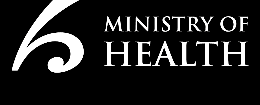





Document Four
29.
We accept the need to regularly report to the public on the national reserve system.
The process for how this would happen is stil to be developed, meanwhile we will
continue to report regularly on correct PPE stocks and expected supplies.
30.
This work wil address recommendations 2, 5, 7, 8 and 9 in the report.
Clinical guidance
31.
We are currently working through how recommendation 3a will impact future clinical
guidance. Progress on this recommendation wil be provided as part of future updates.
Act
Equity
32.
During the COVID-19 response, a national approach to PPE ordering and distributing
PPE was established and managed by the Ministry. This national system also included
access to the national reserve supply of masks, when appropriate.
33.
To ensure equitable access to a constrained mask supply, five categories were
determined for prioritisation:
DHBs
Non-DHB publicly funded health services e.g. general practices, community
Information
pharmacies, aged care and residential services
Non-DHB privately funded health services
Non-health emergency services
Non-health essential workforce. Official
34.
The recommendations made in the report wil provide a basis for the Ministry to
continue to further strengthen equitable access to PPE in the event of a national
emergency.
the
Next steps
35.
The Ministry wil continue to work with stakeholders to develop and finalise these
proposals over the coming months. Given the likely scale of some of the proposed
under
changes, Cabinet endorsement may be required. Further information can be provided
on request. In any event, we will provide an update on the progress to strengthen the
systems and processes that support the continuity of supply of PPE and improve our
preparedness for any future events by the end of August 2020.
Released
Dr Ashley Bloomfield
Director-General of Health
Ministry of Health
Health Report: 20201069
5
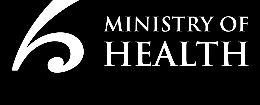
Document Four
Appendix 1 - Recommendations
1.
The Ministry of Health regularly review district health boards’ health emergency plans
to ensure that they are complete, up to date, and consistent with each other and with
the Ministry’s overarching Emergency Plan. The plans need to be kept current and
tested regularly;
2.
The health emergency planning framework contain specific guidance about
responsibilities for procuring and distributing personal protective equipment;
3.
(a) The Ministry of Health and district health boards, with appropriate health and
Act
disability sector representatives, review how clinical guidelines for personal protective
equipment wil be prepared or amended and consistently communicated during
emergencies.
(b) The Ministry needs to ensure that demand forecasting, supply, and procurement are
updated to take account of changes to guidance that have an effect on demand;
4.
The Ministry of Health consider whether the roles, responsibilities, coverage,
requirements, and planning assumptions for maintaining the national reserve of
personal protective equipment are clear and remain appropriate;
Information
5.
The Ministry of Health work with other government agencies to determine how workers
and providers not currently covered by the national reserve of personal protective
equipment access it in the future and clarify roles and responsibilities for this change;
6.
The Ministry of Health regularly reassess assumptions for the categories and amount of
personal protective equipment to be held in the national reserve;
Official
7.
The Ministry of Health implement a centralised system for regular public reporting on
the national reserve and implement periodic stocktakes to confirm the accuracy of the
data and the condition of the stock;
the
8.
The Ministry of Health reintroduce a requirement for district health boards to manage
national reserve stock in such a way as to reduce the risk of stock becoming obsolete;
9.
The Ministry of Health, in col aboration with district health boards, prepare more
detailed operational plans and processes that describe how the national reserve system
under
should operate (including distribution mechanisms) and test these as part of future
national health emergency exercises; and
10.
The Ministry of Health and the district health boards strengthen the procurement
strategy by including an analysis of risks to the supply chain and have a plan to address
those risks.
Released
Health Report: 20201069
6
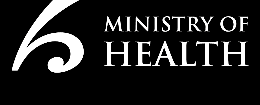
Document Four
Appendix 2 – Current composition of the National Reserve Supplies
The Ministry manages and/or controls several reserve supplies for use in an emergency. Some of
these are held local y in DHBs and others are held central y by the Ministry.
National reserve supply items
Stored locally by Stored central y
DHBs
by Ministry
Respiratory personal protective equipment
√
√
Act
(P2/N95 masks, general purpose [surgical] masks)
Other personal protective equipment
(aprons/gowns, gloves, eye protection, hand
√
sanitiser)
Clinical equipment
(syringes, IV access and fluids)
√
Antiviral medication - Tamiflu
√
√
Information
Antiviral medication - Relenza
√
IV antibiotics
√
H5N1 pre-pandemic vaccine
√
Official
Vaccination supplies
√
(sharps bins, syringes)
the
Body bags
√
under
Released
Health Report: 20201069
7
Document Outline











